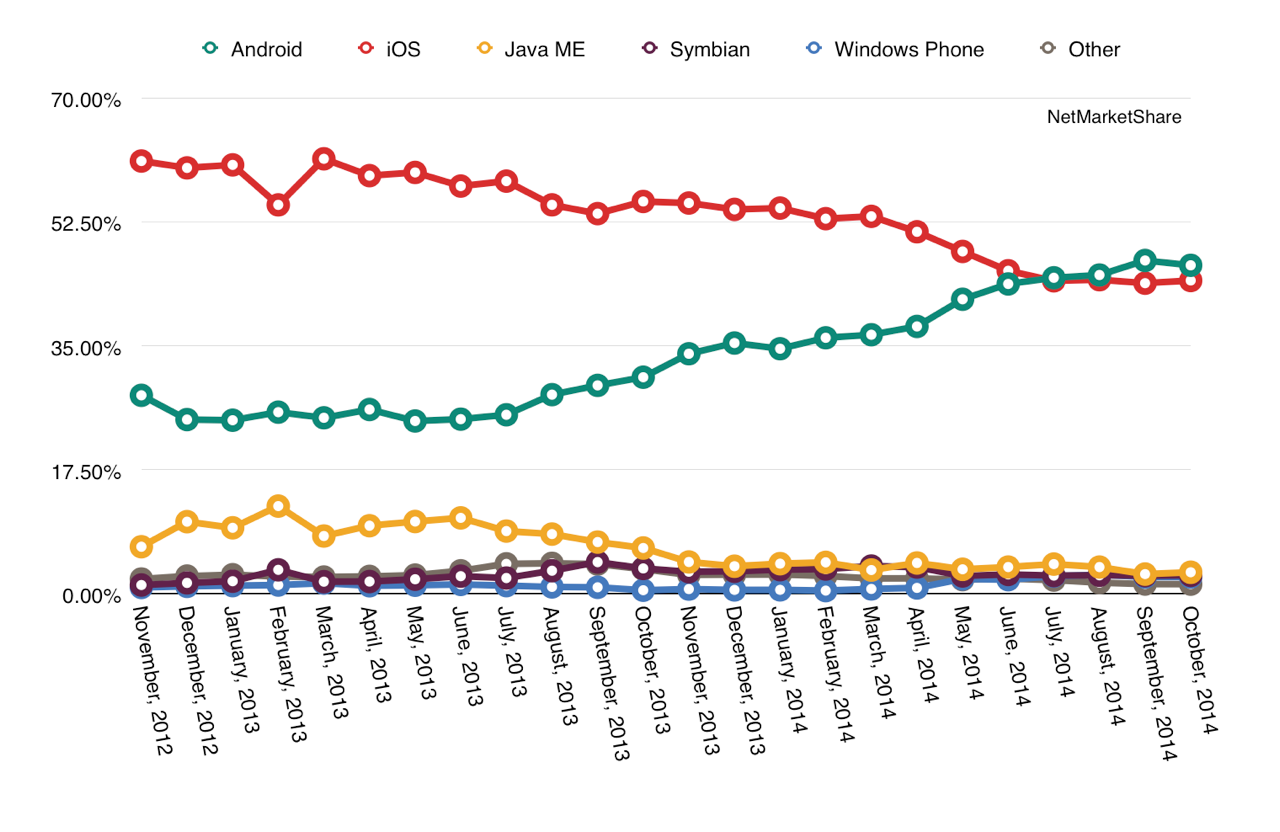
The personal computer in the shape of a notebook or desktop has taken computers as far as those shapes would allow. Now, the future of computing is only possible because of new shapes: That of tablets and, especially, Internet-connected smartphones.
Tablets will take computing beyond where it’s ever been before, getting computers into the hands of more people. The connected smartphone, however, will bring computing to everyone. More importantly, it will bring the Internet to everyone. More revolution will come from smartphones than from any previous computing product in history. It’s because of this that we will see a future with one billion more people online, a future only made possible because of mobile.
Smartphones are key to getting the next billion people on the Internet because they’re getting cheaper and more connected. Over the next decade or so, we will watch smartphones become a commodity. Estimates are that by 2020, quality, powerful smartphones could cost as little as $10, according to my firm, Creative Strategies. And the mobile web is already bigger than the desktop web, and it will soon dwarf the desktop web. The future of the Internet is mobile, and that reality has interesting implications.
Global Mobile Web Browsing
There was a debate last year around the disparity between web browsing in Apple’s iOS and the Android operating system. It seemed a conundrum — Android-powered devices had twice the user base, but much less of the global browsing share. Only recently has Android overtaken iOS in global web browsing share, and it is still very close, as this NetMarketShare chart shows:

When we include open-source Android and Google’s Android, Android has well more than double the active devices compared to iOS. But, given Android’s market share advantage, why that taken so long to become true?
The bulk of Android’s growth and market share is in the lower tiers of smartphone price bands. My estimates put premium Android price tiers at roughly 15% of the global Android installed base — meaning most of the people running Android are using devices much cheaper than Apple’s iPhones. This explains much of the global web browsing conundrum: Apple has a significant installed base of premium users, and those customers spend more time browsing the web and consuming Internet data. Simply put, Apple’s more affluent audience can more easily afford to liberally browse the web. Much of Android’s installed base, having to deal with expensive and slow mobile Internet connection times and no home Wi-Fi, could not.
This insight becomes even more clear when we look at this chart from Jana.com showing the number of hours of minimum wage work required to pay for the average data plan:

Due to the infrastructure challenges in many emerging markets, consumers there are very aware of how much data they are using and the size of the applications they are downloading. This is a fascinating quote in a post from LightSpeed Venture Partners, an investment firm focused on India:
So, what is an ideal app size, especially in markets like India with challenged infrastructure?
The ideal size is 10-15MB globally. Idea size for an app for tier 2/3 countries (like India) is below 5MB. 500MB+ is a non-starter. At 50MB+ the conversion rates fall off dramatically. On Android and iOS, conversion rates dip by 50% in tier 1 nations for non-game apps above 50MB. In tier 2 and tier 3 nations, conversion rates dip by 50% for games above 15MB.
The Light Web
Understanding this, we should consider the role played by so-called “light apps,” apps that are either small downloads or operate entirely on the web — a Yelp-style app in India called Zomato, for instance, is a great example of a light app. While it’s true that native apps are still dominant, that only factors in the top 30-40% of the global mobile audience that has a smartphone and a data plan today. As connected smartphones’ reach extends to less affluent users, a healthy portion of those customers will be even more sensitive to the costs of data and size of applications they consume.
This is why the “light web” will be the connectivity method of choice for the next billion web users. Some companies, like Uber, have built robust web apps accordingly, increasingly powered by the cloud instead of running on users’ devices. It’s clear that we’re heading to a fascinating “light web” future, not only made possible by mobile devices but empowered by them. This future will post great challenges to many incumbents, but even greater opportunities for quick-moving innovators.
Ben Bajarin is the Director of Consumer Technology at Creative Strategies, Inc., A market intelligence and research firm. He focuses his analysis and research on all things consumer technology. He is a husband, father, gadget enthusiast, early adopter and hobby farmer.
More Must-Reads from TIME
- Why Trump’s Message Worked on Latino Men
- What Trump’s Win Could Mean for Housing
- The 100 Must-Read Books of 2024
- Sleep Doctors Share the 1 Tip That’s Changed Their Lives
- Column: Let’s Bring Back Romance
- What It’s Like to Have Long COVID As a Kid
- FX’s Say Nothing Is the Must-Watch Political Thriller of 2024
- Merle Bombardieri Is Helping People Make the Baby Decision
Contact us at letters@time.com